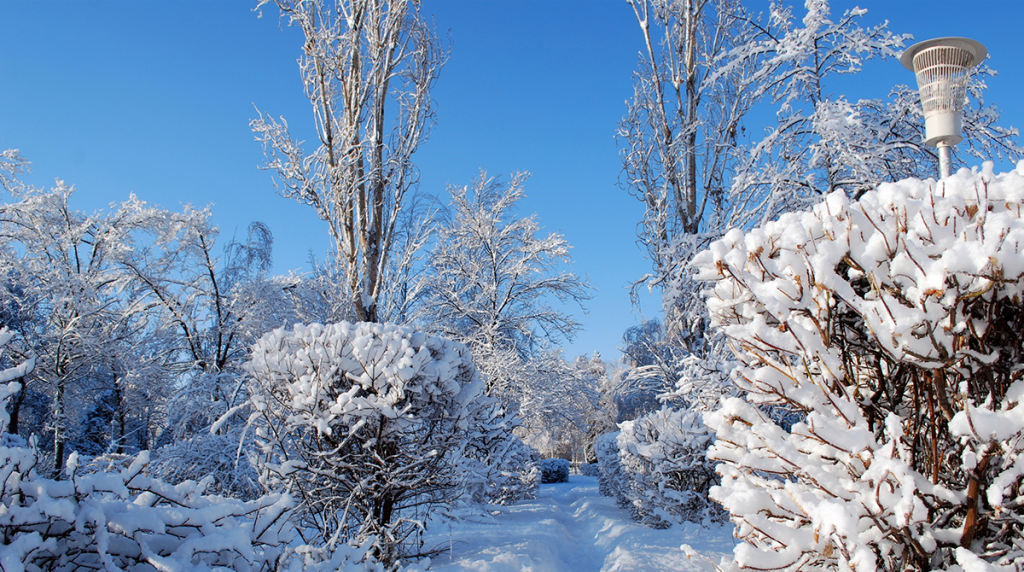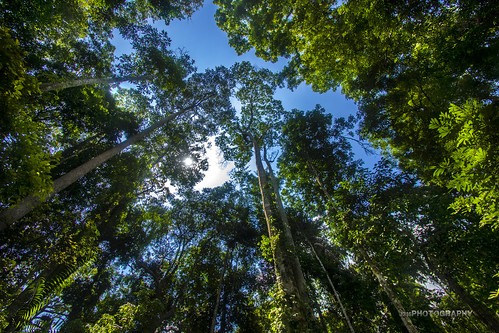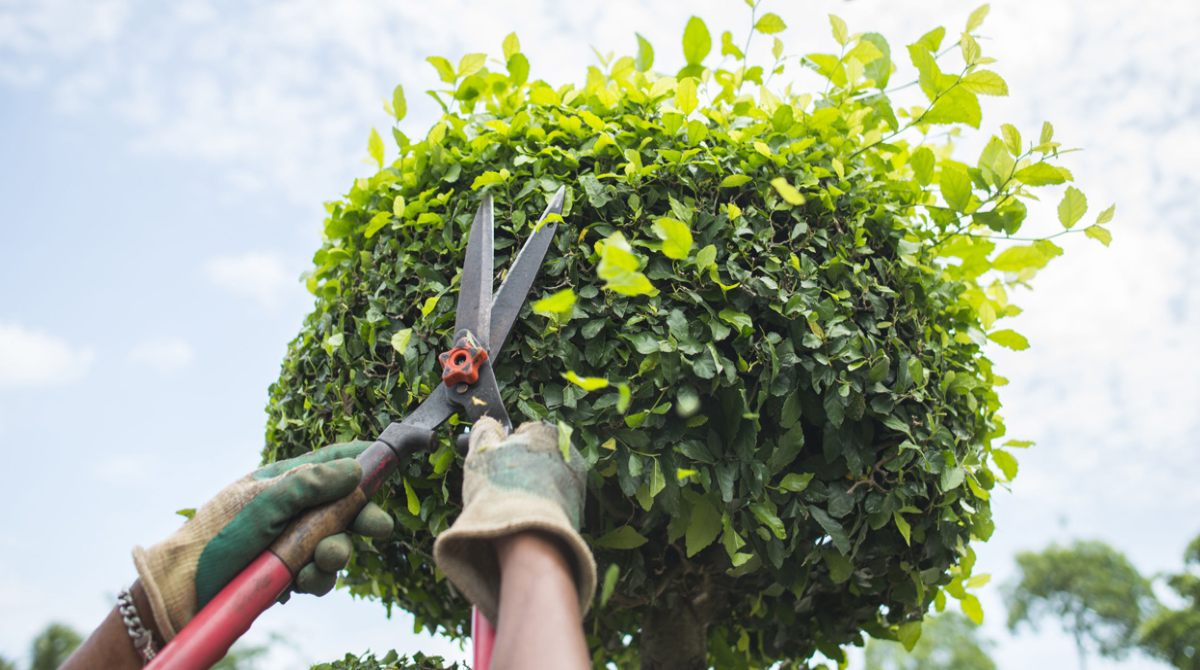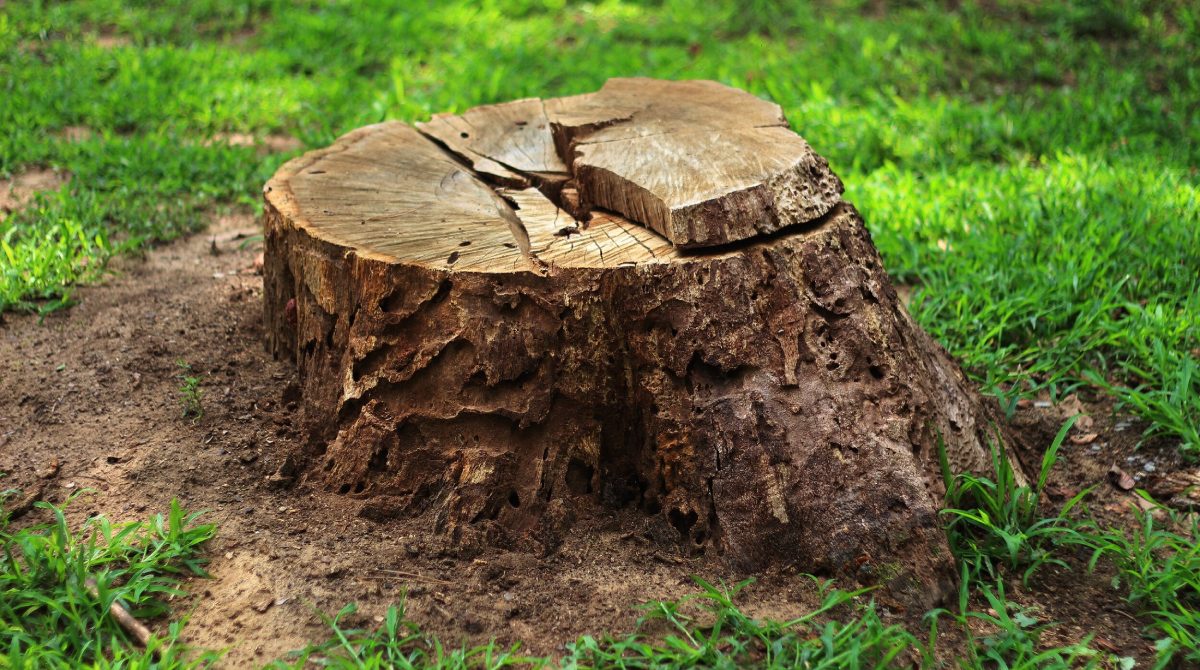
Protecting Trees and Shrubs in Winter
Date February 17, 2021
Category
Although winters in North Central Texas are relatively mild, the cold weather can still be tough on our trees and shrubs, especially when they’re young. Maybe you’ve been watching the weather or getting weather alerts on your phone saying the local temperatures are expected to drop below freezing. In that case, you need to take some precautions to ensure your young trees’ safety and vulnerable shrubs. Here are some winter tree care tips to give your landscape some extra shrub and tree protection.
Protecting your landscape from frost damage and sunscald
Sunscald occurs when a plant freezes at night and is then exposed to warmer temperatures and direct sunlight during the day. The combination can damage a tree’s bark or “burn” evergreen foliage that continues to transpire in winter. Although mature trees aren’t as susceptible to the effects of sunscald, they can kill or cause severe damage to young trees and shrubs. There are a couple of things you can do to protect your landscape from sunscald and frost damage. You can wrap the trunks of young trees or, if your trees and shrubs are small enough, you can cover them. Here’s how:
- To cover your plants or small trees, drape a protective material over them. This allows the plants to conserve the heat coming up from the soil, so you should ensure that the cover is large enough to reach the ground. Use stakes or rocks to keep the body secured to the ground. You should avoid using heavy plastics. Something breathable that allows moisture to ventilate, like burlap or a sheet, is ideal. Alternatively, you can use cardboard boxes, tubs, or trash cans.
- To wrap the trunks of your trees, use polypropylene fabric because it’s stretchy, breathable, and durable. You can find it at most garden stores. Start at the bottom of the trunk and wind the tree wrap around the base at a slightly upward angle. It should overlap enough to cover the entire base and be snug but not so tight that it chokes the tree.
- If you have conifer or evergreen trees or shrubs, you’ll need to monitor them when it snows. If the branches are bending under the snow’s weight, you should gently brush the snow away. However, don’t try to remove ice after an ice storm since that could cause more harm than good.
Mulching for winter protection
In regions that receive a lot of snow during the winter, the accumulated snow acts as a protective blanket for trees and plants, adding moisture to the soil and controlling the temperature. However, we don’t generally get a lot of snow in North Texas, so that’s why mulching before winter is essential for protecting your trees and shrubs from the elements. Our cold, dry winter weather can cause tree root damage, but mulch mitigates that danger by insulating the soil, keeping moisture and heat underground.
Just be careful not to use too much mulch and create what arborists call a “mulch volcano.” Over-mulching can cause the roots to grow up around the base of the tree and choke it. It can also keep oxygen from being able to reach the roots. When you mulch, make a layer about two to four inches thick. Spread the coating around the tree’s base, starting a few inches away from the trunk, going out in all directions about three or four feet.
Watering your trees in winter
Both young and old trees need plenty of water throughout the year, but young trees need even more. When the weather is cold and gray, you might think that your trees are hibernating and don’t need water, but trees don’t exactly hibernate. Although they go dormant and their leaves drop, their roots continue to grow and collect water and nutrients from the soil all winter. This is an integral part of their life cycle, and without enough water, they can’t accomplish everything they need to thrive in the spring.
- For young or newly planted trees — depending upon site location, soil type, drainage, and rainfall — your tree should get five gallons of water per week per caliper inch during the winter. To determine the caliper inch, measure the trunk’s diameter six inches from the ground. During a week of heavy rainfall or other precipitation events, skip the supplemental watering. Over-watering can kill a tree, so be wary of water sitting at the base or soil that appears water-logged.
- Mature trees need a deeper soak during months of less than three or four inches of rainfall, so you should water them once a week for a longer duration. Depending on your soil’s drainage, if you water for 30 minutes, that’s generally considered to be half an inch of water. Like with young trees, be mindful of over-watering.
Knowing when to be concerned
Since deciduous trees lose their leaves during the winter, it can be difficult to tell if a winter tree is dead or damaged. Often you won’t know until spring if your tree has suffered tree damage from the cold. If you think you might have broken trees or damaged shrubs on your property, here are some things you can do during the winter to check the health of your plants:
- First, check the outside of your tree or shrub for signs of life. Dormant trees will still have small leaf buds, which means that your tree is alive and preparing to leaf out in the spring. It would be best if you also looked for any signs of sickness. Are there open wounds or large cracks in the trunk? Is there fungus growing on the branches? If you notice signs on the outside of your tree or shrub that give you concern about its health, you can go a little deeper with the twig test.
- For the twig test, break off a small branch with your fingernail or knife. If it’s brittle and snaps quickly, there’s a chance your tree or shrub could be dead or dying. Check other parts as well because it could be just one branch or section that’s dead. For a tree or shrub that’s alive, the layer under the bark should be green and somewhat moist. If you think your tree might be sick, dying, or dead, call a professional tree care provider for a tree inspection immediately.
TreeNewal can help
If you have questions about caring for your trees and shrubs this winter, or if you have concerns about their health, reach out to our tree care experts. Our ISA Certified Arborists are available to visit your property to make an assessment and recommendation. Beyond our winter tree care services, we also offer tree services such as tree nutrition, tree pruning, tree trimming and removal, root aeration and air-spading, insect and disease management, and more. For more information, visit our website at treenewal.com, or call us today at tel:(817) 592-6846 to schedule an appointment.
To learn more about Protecting Trees and Shrubs in Winter, Healthy Trees, call our Argyle and Southlake-based teams at tel:(817) 592-6846 or send us a message.
We’re a little different than the average tree services company.
Learn more about TreeNewal’s ISA Certified Arborists!
Our Dallas/Fort Worth-based tree doctors can explain how sustainable tree care services add more value to your bottom line.
Healthy trees, healthy lives.








